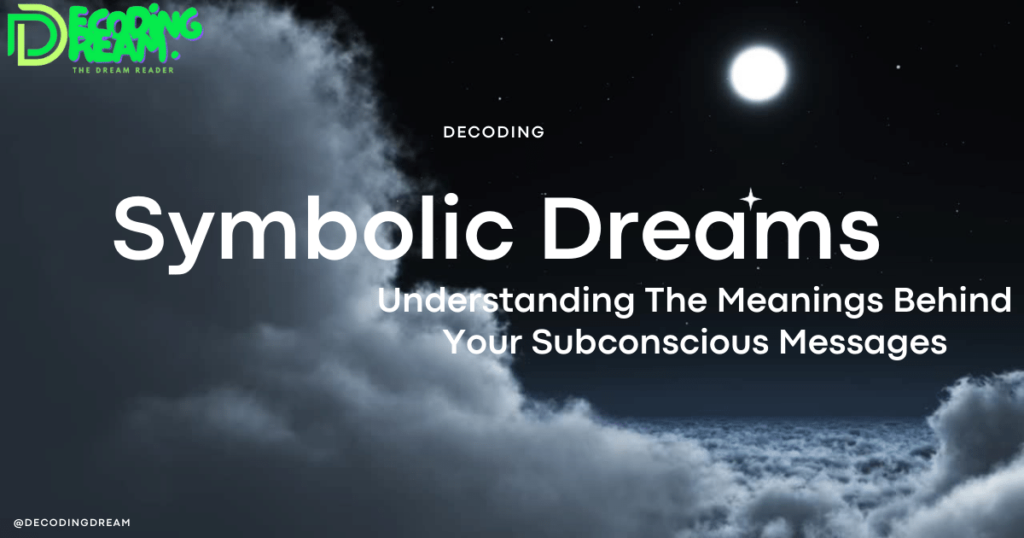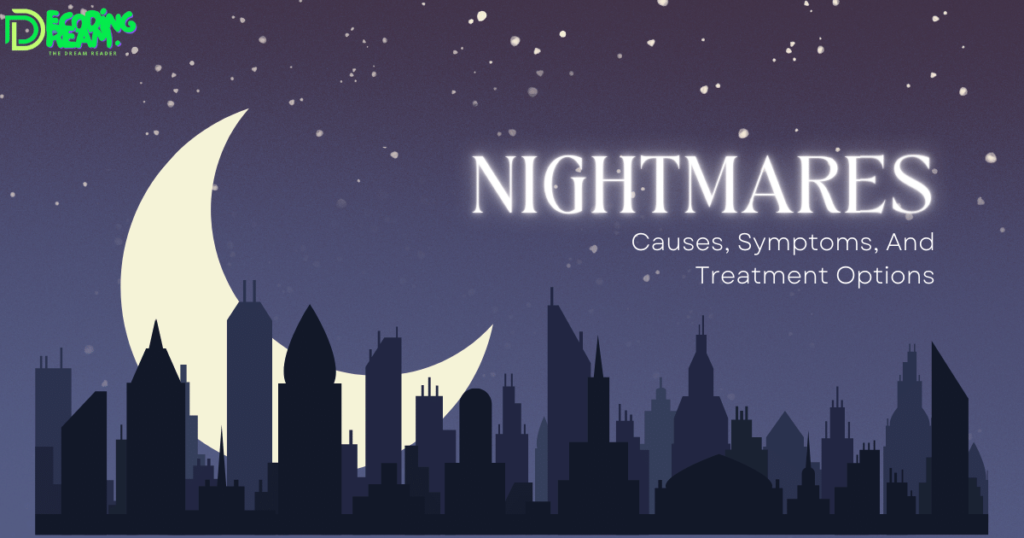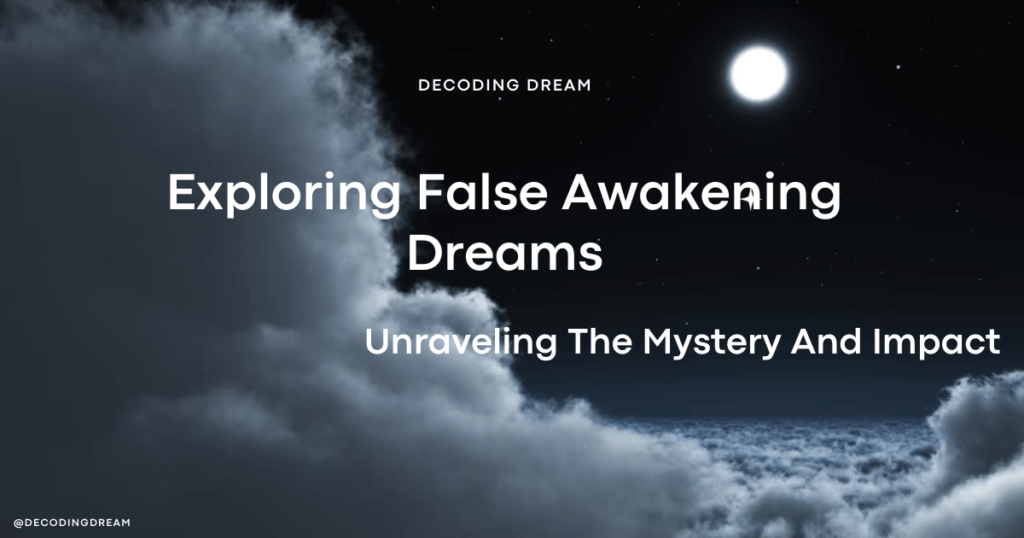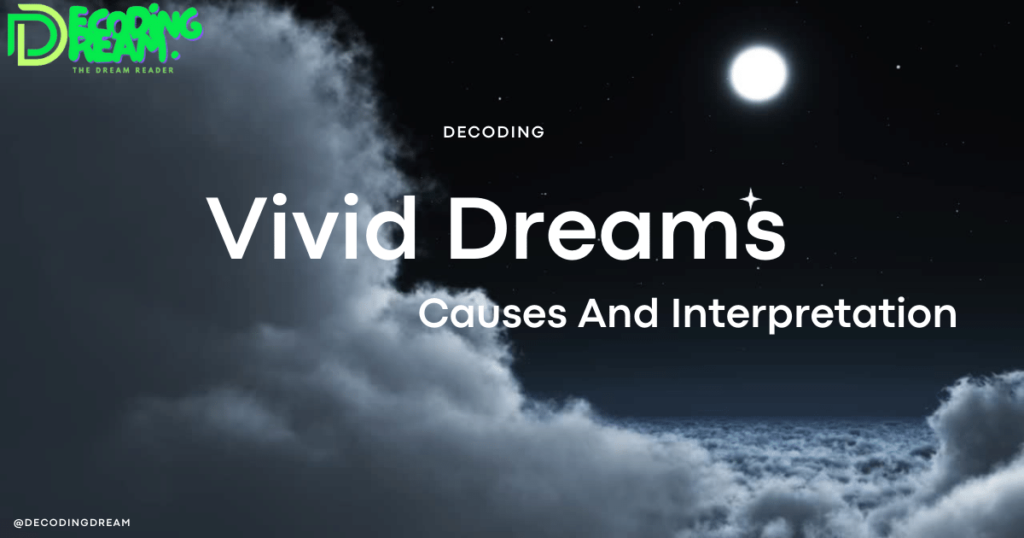
Lucid dreams are a fascinating phenomenon that has intrigued people for centuries. It is a type of dream where the dreamer becomes aware that they are dreaming and can take control of the dream’s narrative. During a lucid dream, the dreamer may be able to manipulate the dream environment, change the course of events, and even interact with dream characters.
The history of lucid dreaming dates back to ancient Tibetan and Indian cultures, where it was believed to be a spiritual practice that could lead to enlightenment. However, it wasn’t until the 20th century that Western scientists began to study lucid dreaming. Today, we better understand the science behind lucid dreaming and the techniques that can be used to induce it.
Lucid dreaming has been shown to have numerous benefits, including overcoming fears, improving creativity, and enhancing problem-solving skills. However, there are risks and misconceptions associated with lucid dreaming, such as sleep paralysis and the belief that lucid dreaming can replace real-life experiences. This article will explore the topic of lucid dreaming in detail, providing readers with a comprehensive understanding of what it is, how it works, and its potential benefits and risks.
Key Takeaways
- Lucid dreaming is a dream where the dreamer becomes aware that they are dreaming and can take control of the dream’s narrative.
- The history of lucid dreaming dates back to ancient Tibetan and Indian cultures, and Western scientists have been studying it since the 20th century.
- Lucid dreaming has numerous benefits, including overcoming fears and improving creativity. Still, risks and misconceptions are associated, such as sleep paralysis and the belief that it can replace real-life experiences.
Understanding Lucid Dreams
Lucid dreaming is a state of consciousness where a person is aware that they are dreaming and can exercise some control over their environment. In a lucid dream, the dreamer can manipulate the world, change the narrative, and interact with dream characters.
Lucid dreaming is a natural phenomenon that occurs during the Rapid Eye Movement (REM) stage of sleep. During REM sleep, the brain is highly active, and the body is in paralysis to prevent the dreamer from physically acting out their dreams.
While the exact cause of lucid dreaming is still up for debate, some studies suggest that it is linked to increased activity in the prefrontal cortex, the part of the brain responsible for decision-making, self-awareness, and working memory.
Lucid dreaming can be induced through various approaches, including reality testing, meditation, and dream journaling. Reality testing involves regularly questioning whether you are dreaming or awake throughout the day, which can increase the likelihood of doing the same in a dream. Meditation can help improve self-awareness and focus, which can carry over into lucid dreaming. Dream journaling involves writing down dreams as soon as you wake up, which can help identify recurring themes and patterns, making it easier to recognize when you are dreaming.
While lucid dreaming can be a fun and exciting experience, it is not without its potential risks. Some people have reported sleep paralysis, false awakenings, and even nightmares they cannot escape. Therefore, it is essential to approach lucid dreaming cautiously and seek professional help if you experience any negative side effects.
In conclusion, lucid dreaming is a fascinating and mysterious phenomenon that has captured the interest of scientists and dreamers alike. While it may take some effort to achieve, the benefits of lucid dreaming can be significant, including overcoming fears, improving creativity, and enhancing problem-solving skills.
History of Lucid Dreams
Lucid dreaming has been a subject of interest for centuries, with various cultures and religions exploring controlling one’s dreams. The term “lucid dream” was first coined by Frederik van Eeden, a Dutch psychiatrist, in his 1913 article “A Study of Dreams.” However, the article predates the description of dreamers being aware that they are dreaming.
In the 8th century, Tibetan Buddhists developed a practice called “dream yoga,” which aimed to achieve lucidity in dreams. They believed that by becoming aware of the dream state, one could gain insight into the nature of reality and achieve enlightenment.
In the 19th century, the French author Marie-Jean-Léon Lecoq, better known as the Marquis de Hervey de Saint-Denys, wrote a book called “Les Rêves et les Moyens de Les Diriger“ (“Dreams and the Ways to Direct Them”), in which he described his experiences with lucid dreaming and offered techniques for inducing them.
In the 20th century, researchers began to study lucid dreaming more systematically. In the 1960s, British psychologist Celia Green published a book called “Lucid Dreams,” which provided a comprehensive overview of the phenomenon and its potential applications.
In the 1970s, Stephen LaBerge, a psychologist at Stanford University, developed techniques for inducing lucid dreams and researched their physiological and psychological characteristics. He founded the Lucidity Institute in 1987 to promote lucid dreaming research and provide resources for those interested in learning how to induce them.
Today, lucid dreaming continues to be a subject of fascination for many people, with numerous online communities and resources dedicated to exploring the practice and its potential benefits. While the scientific study of lucid dreaming is still in its early stages, researchers continue to investigate the phenomenon and its potential applications in fields such as therapy, education, and creativity.
The Science Behind Lucid Dreams
Lucid dreaming is a phenomenon where a person becomes aware that they are dreaming while still asleep. Researchers have observed this state of consciousness for decades, and the neurobiology of lucid dreaming is still being studied. This section will explore brain activity during lucid dreams and the sleep stages associated with lucid dreams.
Brain Activity During Lucid Dreams
Studies have shown that brain activity during lucid dreams is similar to waking consciousness. The prefrontal cortex, responsible for decision-making and self-awareness, is highly active during lucid dreaming. This suggests that the ability to become aware that one is dreaming is linked to the prefrontal cortex.
In addition, the amygdala, responsible for processing emotions, is less active during lucid dreaming. This may explain why people are able to remain calm during nightmares when they realize that they are dreaming.
Stages of Sleep and Lucid Dreams
Lucid dreams are most commonly reported during the rapid eye movement (REM) stage of sleep. This is the stage of sleep when most dreaming occurs. During REM sleep, the brain is highly active, and the body is paralyzed to prevent acting out dreams.
However, lucid dreams have also been reported during non-REM (NREM) sleep stages N1 and N2. In these stages, the brain is less active, and the body is not paralyzed. It is unclear why lucid dreams occur during these stages, but it may be related to the brain’s ability to generate conscious experiences even when it is not highly active.
Overall, the science behind lucid dreaming is still being studied. Still, researchers have made significant progress in understanding brain activity during lucid dreams and the sleep stages associated with lucid dreams.
Techniques to Induce Lucid Dreams
Lucid dreaming is a fascinating experience that many people would like to have. Fortunately, some techniques can help increase the likelihood of having lucid dreams. Here are three popular techniques:
Reality Testing
Reality testing is a technique that involves questioning whether you are in a dream or in reality. Doing this regularly throughout the day may increase your chances of realizing that you are in a dream when you are dreaming.
One way to perform reality testing is to ask yourself if you are dreaming whenever you see a particular object, such as a clock or a mirror. If you habitually do this, the idea is that you will eventually do it in your dreams as well.
Wake Back to Bed Method
The wake back to bed (WBTB) method involves waking up in the middle of the night, staying awake for a short period, and then going back to sleep. The idea is that this can increase the likelihood of having lucid dreams during the second sleep period.
To use this technique, set an alarm to wake up after about five hours of sleep. Stay awake for about 30 minutes, and then go back to sleep. You may be more likely to have lucid dreams during the second sleep period.
Mnemonic Induction of Lucid Dreams
The mnemonic induction of lucid dreams (MILD) technique involves setting an intention to have a lucid dream before going to sleep. This technique involves a combination of reality testing and visualization.
To use this technique, set an intention to have a lucid dream before going to sleep. When you wake up in the middle of the night, try to remember your dream and visualize yourself becoming lucid. Repeat this process until you fall asleep again.
In conclusion, several techniques may help increase the likelihood of having lucid dreams. These techniques include reality testing, the wake-back-to-bed method, and the mnemonic induction of lucid dreams technique. While these techniques are not guaranteed to work for everyone, they are worth trying for those interested in exploring the world of lucid dreaming.
Benefits of Lucid Dreaming
Lucid dreaming has been a topic of interest for researchers and dream enthusiasts alike. While some people may view lucid dreaming as a form of entertainment, several potential benefits are also associated with this type of dreaming.
Improved Creativity
One of the benefits of lucid dreaming is that it can improve creativity. People can intentionally manipulate the dream environment and explore new ideas and concepts when they know they are dreaming. This can lead to increased creativity and problem-solving abilities in waking life.
Overcoming Fears and Phobias
Lucid dreaming can also help individuals overcome fears and phobias. People can confront their fears in a safe and controlled environment when they are in a dream state. For example, if someone fears heights, they can experience the sensation of being high up in a dream and gradually work towards overcoming their fear.
Improved Sleep Quality
Lucid dreaming can also improve sleep quality. When people are aware that they are dreaming, they are less likely to wake up at night. This can lead to a more restful night’s sleep and increased daily energy levels.
Personal Growth and Self-Discovery
Lucid dreaming can also facilitate personal growth and self-discovery. When a person is in a dream state, they can explore their inner thoughts and emotions without the distractions of the waking world. This can increase self-awareness and a deeper understanding of one’s psyche.
Enhanced Mindfulness
Finally, lucid dreaming can enhance mindfulness. When people know they are dreaming, they can practice mindfulness techniques within the dream state. This can lead to increased mindfulness in waking life and a greater ability to stay present in the moment.
Overall, lucid dreaming has several potential benefits that can improve a person’s mental and emotional well-being. While more research is needed to understand the benefits of lucid dreaming fully, it is clear that this type of dreaming can positively impact a person’s life.
Risks and Misconceptions
Lucid dreaming has gained popularity in recent years, but some risks and misconceptions are still associated with this phenomenon. Here are some of the most common ones:
Disrupted Sleep
One of the most significant risks of lucid dreaming is that it can disrupt sleep. Although lucid dreaming typically occurs during REM sleep, it can still affect sleep quality. People who frequently engage in lucid dreaming may wake up tired or groggy, affecting their performance during the day.
Mental Health Issues
Another potential risk of lucid dreaming is that it can exacerbate mental health issues. People who suffer from anxiety or depression may find that lucid dreaming makes their symptoms worse. People who have experienced trauma may find that lucid dreaming triggers traumatic memories or feelings.
Misconceptions
There are also several misconceptions surrounding lucid dreaming. Here are a few of the most common ones:
- Lucid dreaming is dangerous: While some risks are associated, it is not inherently dangerous. Most people can engage in lucid dreaming safely with proper guidance and techniques.
- Lucid dreaming is easy: While some people may be able to achieve lucid dreaming more easily than others, it still requires practice and dedication. It is not a quick fix for sleep problems or other issues.
- Lucid dreaming is the same as astral projection: While both lucid dreaming and astral projection involve altered states of consciousness, they are different. Lucid dreaming involves becoming aware that you are dreaming, while astral projection involves leaving your physical body and traveling to other places.
Overall, while some risks and misconceptions are associated with lucid dreaming, it can be a safe and rewarding experience for many people. As with any new practice, it is essential to approach it cautiously and seek guidance from experts in the field.
Lucid Dreaming in Popular Culture
Lucid dreaming has been a topic of fascination in popular culture for decades. Many movies, TV shows, and books have explored the idea of lucid dreaming and its potential for adventure, self-discovery, and even danger.
One of the most well-known examples of lucid dreaming in popular culture is the movie Inception, directed by Christopher Nolan. In the movie, the characters can enter and manipulate dreams, including lucid dreams, to accomplish their goals. The movie popularized the concept of lucid dreaming and sparked interest in the topic among many people.
Another popular example of lucid dreaming in popular culture is Doctor Who. In the episode “Amy’s Choice,” the characters are forced to distinguish between reality and a dream world where they are in danger. The episode explores the idea of lucid dreaming and how it can be not easy to distinguish between dreams and reality.
Lucid dreaming has also been featured in books, such as the novel “The Lathe of Heaven” by Ursula K. Le Guin. In the book, the main character can control his dreams and change reality through lucid dreaming. The book explores how lucid dreaming can have unintended consequences and raises ethical questions about manipulating reality through dreams.
Overall, lucid dreaming has been a popular topic in popular culture for many years. It has been explored in many ways, from adventure and self-discovery to danger and ethical questions. The concept of lucid dreaming continues to captivate people and inspire creativity in popular media.
Important Facts:
- Lucid dreaming is a dream state in which the dreamer becomes aware that they are dreaming and can control the dream’s narrative.
- The history of lucid dreaming dates back to ancient Tibetan and Indian cultures, where it was seen as a spiritual practice for achieving enlightenment.
- Western scientists began studying lucid dreaming in the 20th century, with notable researchers like Stephen LaBerge making significant contributions.
- Lucid dreaming occurs during the REM stage of sleep, a phase characterized by increased brain activity and paralysis of the body.
- The prefrontal cortex, responsible for decision-making and self-awareness, shows heightened activity during lucid dreaming.
- Techniques like reality testing, meditation, and dream journaling can be used to induce lucid dreams.
- Lucid dreaming has several potential benefits, including improved creativity, overcoming fears and phobias, and enhanced problem-solving skills.
- Despite its benefits, lucid dreaming can also have risks, such as disrupted sleep and exacerbating mental health issues.
- There are misconceptions about lucid dreaming, such as it being dangerous or easy to achieve.
- Lucid dreaming has been popular in popular culture, featured in movies, TV shows, and books like “Inception” and “Doctor Who.”
Frequently Asked Questions
What is the science behind lucid dreaming?
Lucid dreaming is a state of consciousness where the dreamer is aware that they are dreaming and can exercise some level of control over their dreams. The scientific explanation behind lucid dreaming is still not fully understood. However, research suggests that lucid dreaming occurs during the Rapid Eye Movement (REM) sleep stage, when the brain is highly active and dreams are most vivid. During lucid dreaming, the brain’s prefrontal cortex, which is responsible for decision-making and self-awareness, remains active.
How can you increase your chances of having a lucid dream?
Several methods can increase the likelihood of having a lucid dream. One of the most effective techniques is reality testing, where the dreamer regularly checks their reality to determine whether they are awake or dreaming. Another technique is keeping a dream journal, which helps improve dream recall and allows the dreamer to identify patterns and signs that can trigger lucidity.
What are some common techniques for inducing lucid dreams?
There are many techniques for inducing lucid dreams, including the Wake-Back-to-Bed (WBTB), the Mnemonic Induction of Lucid Dreams (MILD), and the Wake-Initiated Lucid Dream (WILD) technique. WBTB involves waking up during the night, staying awake for a short period, and returning to sleep. MILD involves setting an intention to have a lucid dream while falling asleep, while WILD involves staying conscious while transitioning from wakefulness to sleep.
What are the potential benefits of lucid dreaming?
Lucid dreaming has been associated with several potential benefits, including adventure and fantasy, overcoming nightmares, rehearsal, creativity and problem-solving, healing, and transcendence. However, more research is needed to understand the potential benefits of lucid dreaming fully.
How can you control your actions and surroundings in a lucid dream?
During lucid dreaming, the dreamer can exercise some level of control over their actions and surroundings. This can be achieved through various techniques, such as visualization, verbal commands, and physical gestures. However, the level of control can vary from person to person and from dream to dream.
What are some common misconceptions about lucid dreaming?
One common misconception about lucid dreaming is that it is dangerous. However, research suggests that lucid dreaming is generally safe and does not pose any significant risks. Another misconception is that everyone can easily learn to have lucid dreams. While anyone can learn to have lucid dreams, it requires practice and dedication.





